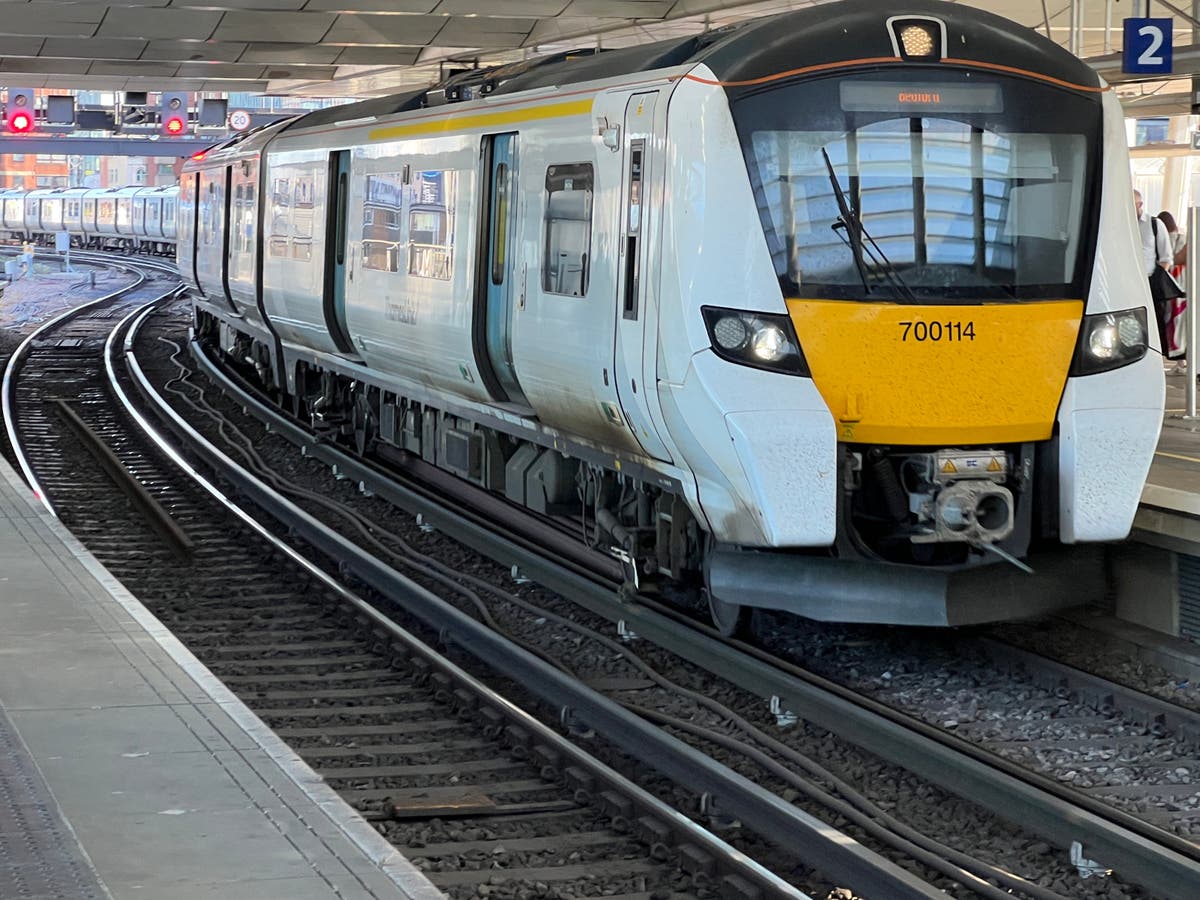ScotRail employees who belong to the RMT union are to be balloted for strike motion over driver-only operation (DOO) trains. The union says the rail operator, run by the Scottish authorities, will enable some routes within the Glasgow space to run and not using a second member of employees – on the discretion of the driving force.
The RMT says greater than 100 conductors who shall be affected by ScotRail’s plans shall be balloted.
The final secretary, Mick Lynch says: “ScotRail try to sneak by DOO by way of the again door by placing practice drivers in a troublesome place, giving them the ability to resolve whether or not a practice runs or not and not using a second employees member on board.
“It is necessary for security and the consolation of passengers {that a} second individual is on these ScotRail providers. We’ll resist all makes an attempt to hazard our members jobs.”
However Phil Campbell, ScotRail buyer operations director, mentioned: “Our proposals is not going to end in anybody throughout the enterprise shedding their jobs, or their phrases and situations, and can in actual fact see the recruitment of virtually 120 extra members of employees.
“As a publicly owned firm, it’s essential that we proceed to ship worth for cash for the taxpayer and this represents a improbable alternative to try this.
“We’re completely dedicated to working with our commerce union colleagues, and we hope that significant talks can proceed to discover a appropriate decision.”
These are the important thing questions and solutions about this advanced and contentious concern.
What’s driver-only operation?
Strictly, when the one employees member engaged on a practice is the driving force. She or he opens and closes the doorways, with cameras put in to make sure that the operation may be carried out safely.
DOO is a subset of driver-controlled operation (DCO). This covers all trains on which the driving force opens and closes the doorways. However on a DCO practice that’s not DOO, a number of members of employees on board will carry out different duties. That is the association on, for instance, Lumo providers linking Edinburgh and Newcastle with London King’s Cross.
The place does DOO exist at current?
Final 12 months, RMT boss Mick Lynch advised MPs on the transport choose committee: “We’ll by no means signal as much as accepting DOO.
“It is going to by no means occur whereas I’m common secretary. It is going to by no means occur so long as the RMT exists.”
Which may give the impression the idea is new. In reality, many trains have been operated by a single individual because the Eighties. Daily, hundreds of thousands of passengers journey on trains the place the one member of employees on board is sitting on the entrance – primarily on short-distance journeys in Higher London, but in addition on some journeys of over 100 miles.
The Rail Supply Group (RDG), representing practice corporations, says that driver-only operation is the conventional mode on 45 per cent of UK trains – and that these trains carry 55 per cent of passengers nationwide.
All Higher Anglia trains, linking East Anglia and Essex with London Liverpool Road, are DOO – together with the Stansted Categorical.
On Britain’s greatest rail franchise, Govia Thameslink Railway (GTR), all Thameslink and Nice Northern trains are driver-only operation,. These embody some very lengthy routes, together with Peterborough to Horsham (118 miles), Brighton to Bedford (103 miles) and London King’s Cross to King’s Lynn (99 miles).
There’s, although, little coherence. Between Brighton and Gatwick Airport, for instance, Thameslink trains have solely a driver on board, however Southern trains serving precisely the identical stations at all times have an on-board supervisor as nicely.
The 2 manufacturers are each operated by the identical organisation, however with totally different staffing agreements. Southern trains largely inside Higher London are DOO, however longer-distance Southern providers – and Gatwick Categorical trains – at all times have an on-board supervisor along with a driver.
The combined sample is repeated elsewhere. On Southeastern, linking central London with Kent and East Sussex, metro providers are driver-only whereas longer-distance trains (together with the high-speed) line at all times have an on-board supervisor or conductor/guard.
What’s the distinction between an on-board supervisor and conductor/guard?
An on-board supervisor doesn’t open or shut the doorways. They’re answerable for customer support on board, in addition to checking tickets. They’ve security coaching in case of emergencies. Generally they’re generally known as “ticket examiners”.
A conductor/guard opens and closes (or typically solely closes) the doorways in addition to offering customer support.
On South Western Railway, linking London Waterloo with Surrey, Hampshire and past, at present the guard opens and closes the doorways. However new and much-delayed “Arterio” trains may have DCO with a second member of employees on board all trains.
So there are some trains the place the driving force opens the doorways however the conductor/guard closes them?
Many. “Driver opens, conductor closes” (DOCC) is commonplace on all Nice Western Railway high-speed providers linking London Paddington with South Wales and the West of England; shorter distances to and from the capital are driver-only.
DOCC applies on ScotRail trains linking Glasgow and Edinburgh by way of Falkirk; different electrical trains on the Scottish community are DCO, however the quick hyperlink between Scotland’s two greatest cities is roofed by an previous settlement courting to when it used diesel trains.
LNER, which runs from London King’s Cross to Yorkshire, northeast England and Scotland, has DOCC on its new Azuma trains, however on older 225 rolling inventory the practice supervisor opens and closes the doorways.
What’s the pondering behind ‘Driver opens, conductor closes’?
The speculation is that the driving force has a transparent view arriving at a station that each one is nicely, and she or he can safely open the doorways. However by having a guard closing the doorways permits them to get a greater view, up and down the platform.
Is driver-only operation protected?
Not in accordance with the rail unions. Mick Lynch of the RMT says growth of DOO “will make our railways much less protected, safe and accessible”.
Mick Whelan, common secretary of the practice drivers’ union, Aslef, says “The practice drivers who do it, hate it, really feel it’s unsafe. We consider it’s inherently unsafe.”
However in 2018 the Rail Security and Requirements Board concluded :”Driver dispatch of trains is certainly protected in accordance with all standards.”
The Workplace of Rail and Highway additionally investigated the observe in 2017 and concluded it “totally meets authorized necessities for protected operation” – as long as “appropriate gear, procedures and competent employees” are in place.
What about security for ladies travelling alone and passengers who want help?
Public safety and incapacity entry are extraordinarily necessary points that want wider dialogue.
In 2013 the Transport Choose Committee mentioned: “We’re very involved that proposals to cut back staffing at stations and on trains may make the railway much less protected, significantly at night time, and deter ladies and weak customers from travelling by practice.
“We advocate the federal government develops a method for enhancing the safety of the rail community, in addition to perceptions of how protected the community is.”
Ideally each practice would have on-board employees and each station can be staffed. This may undoubtedly improve passenger confidence and enhance provision for much less in a position travellers.
However the rail trade is at present shedding billions of kilos annually and is being propped up by taxpayers’ money.
The view from successive governments has lengthy been {that a} stability must be struck between take care of rail customers and the fee to public funds.
Do the federal government and practice corporations need to make issues worse?
That’s definitely the message from the unions. However proposals by the RDG seems to be uirging extra DCO, not DOO.
The organisation stresses its proposals don’t imply routinely eradicating employees from on board trains. As an alternative, the RDG says, the purpose is to “enable employees on board to concentrate on different issues of safety and taking care of clients on board with journey recommendation, promoting tickets and so forth”. In regular circumstances, no less than; the unions are involved that when disruption happens, trains will depart with solely a driver. Which is on the root of the most recent ScotRail dispute.

